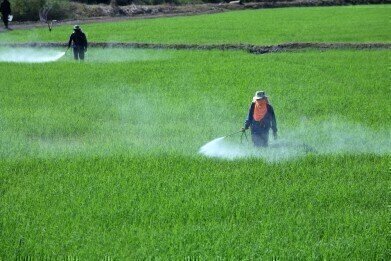Environmental Laboratory
Cyantraniliprole (CAS# 736994-63-1) Standards now Offered
Aug 20 2014
For the first time Chem Service, Inc. (USA) is offering cyantraniliprole (CAS# 736994-63-1) standards. As well as being one of the few companies that carries standards for this broad-spectrum, selective insecticide, Chem Service has 50 years of experience, a team of trained chemists and a proven track record of quality, high purity chemicals.
Cyantraniliprole is an anthranilic diamide pesticide that works to eliminate pests by manipulating the ryanodine receptor and forcing an overproduction of calcium through the insect's muscles. This leads to paralysis and death in many common crop pests. The chemical compound was registered for use in 2014 by the Environmental Protection Agency, with specific tolerances set to avoid the pesticide's potential residue toxicities.
Cyantraniliprole was discovered by DuPont Crop Protection, and is the active ingredient in the pesticide compound Cyzapyr. Syngenta also applied for registration with its cyantraniliprole product, Fortenza. Cyantraniliprole is registered for a variety of crops including berries, coffee, turf and citrus fruit. It is used worldwide with recent registrations in Canada, Argentina, Brazil and China.
The chemical formula for Cyantraniliprole is C19H14BrClN6O2 , and the International Union of Pure and Applied Chemistry name is 3-bromo-1-(3-chloro-2-pyridyl)-4′-cyano-2′-methyl-6′-(methylcarbamoyl)pyrazole-5-carboxanilide. It is similar structurally to phenylpyrazole pesticides, but functionally different.
Although Cyantraniliprole is not expected to be a carcinogen or have many negative effects when working in the lab, it can be particularly toxic to aquatic life for an extended period of time. Much of the criticism and potential environmental danger surrounding Cyantraniliprole has to do with its impact on bees. Environmentalists have compared it to sulfoxaflor in its potential danger to bees, due to its toxicity.
The environmental impact of cyantraniliprole underscores the importance of proper use and standards testing when working with this chemical compound, now available from Chem Service, Inc.
Digital Edition
IET 34.2 March 2024
April 2024
Gas Detection - Biogas batch fermentation system for laboratory use with automatic gas analysis in real time Water/Wastewater - Upcycling sensors for sustainable nature management - Prist...
View all digital editions
Events
Apr 30 2024 Melbourne, Australia
Apr 30 2024 Birmingham, UK
May 03 2024 Seoul, South Korea
May 05 2024 Seville, Spain
May 06 2024 Minneapolis, MN, USA


















